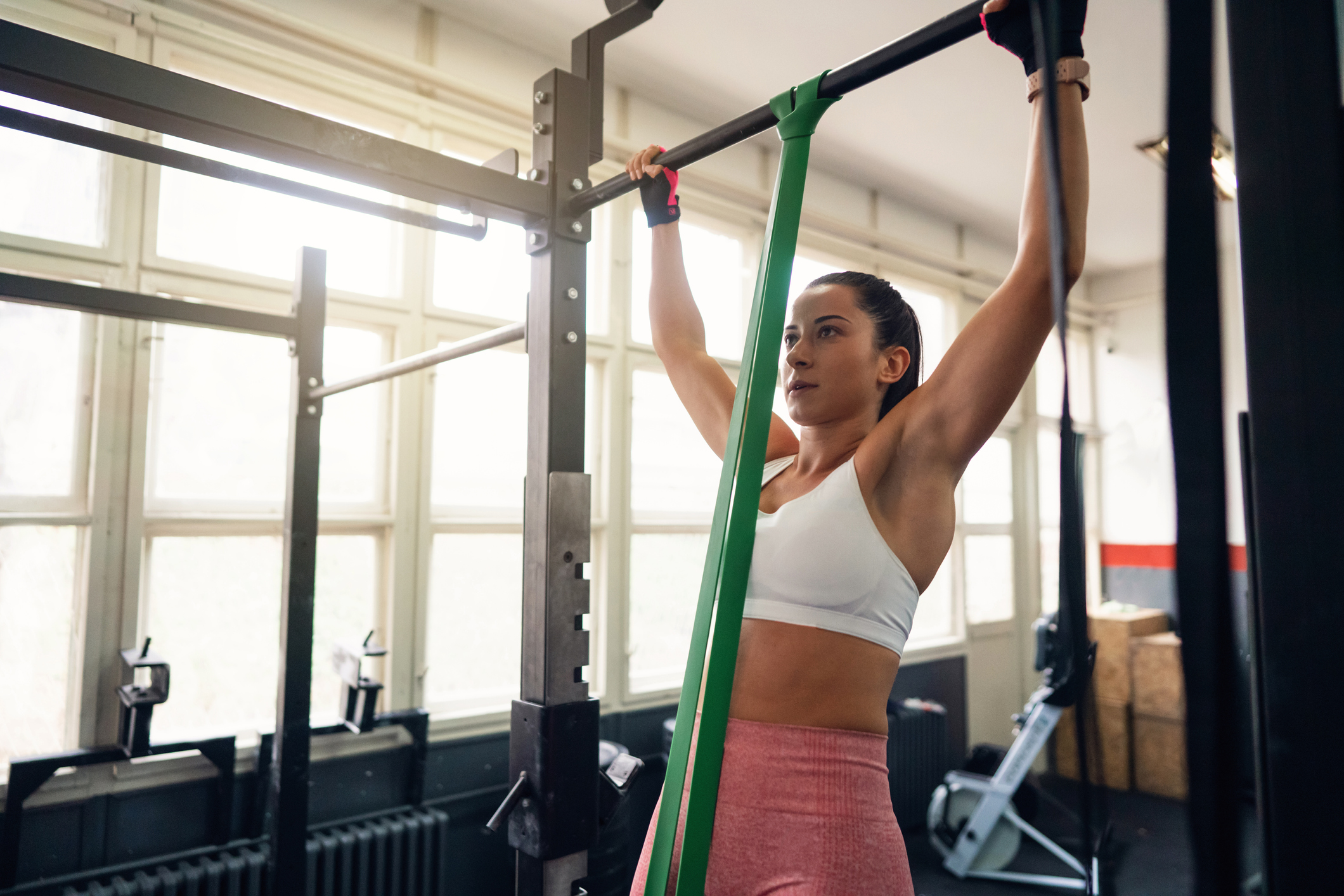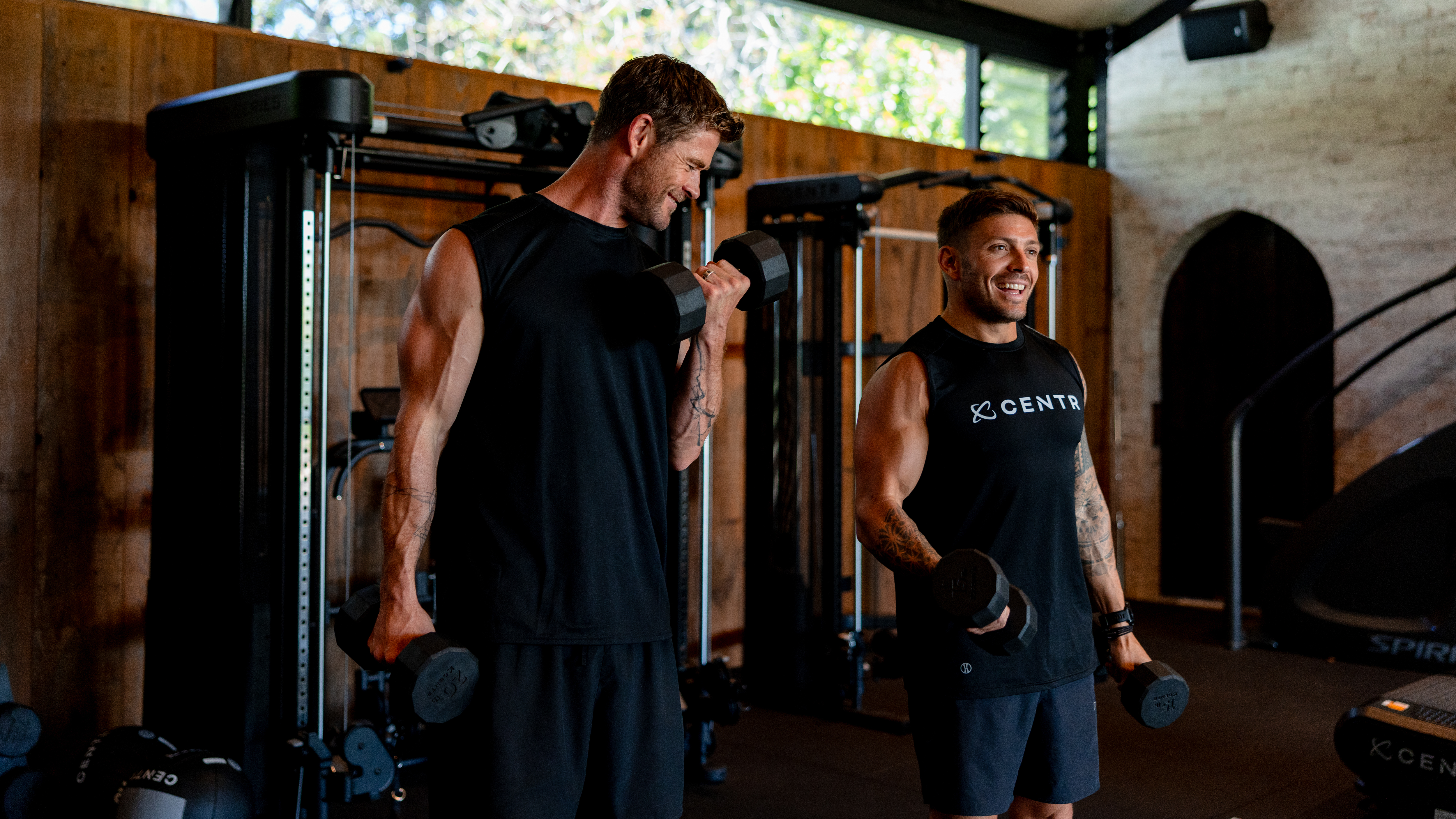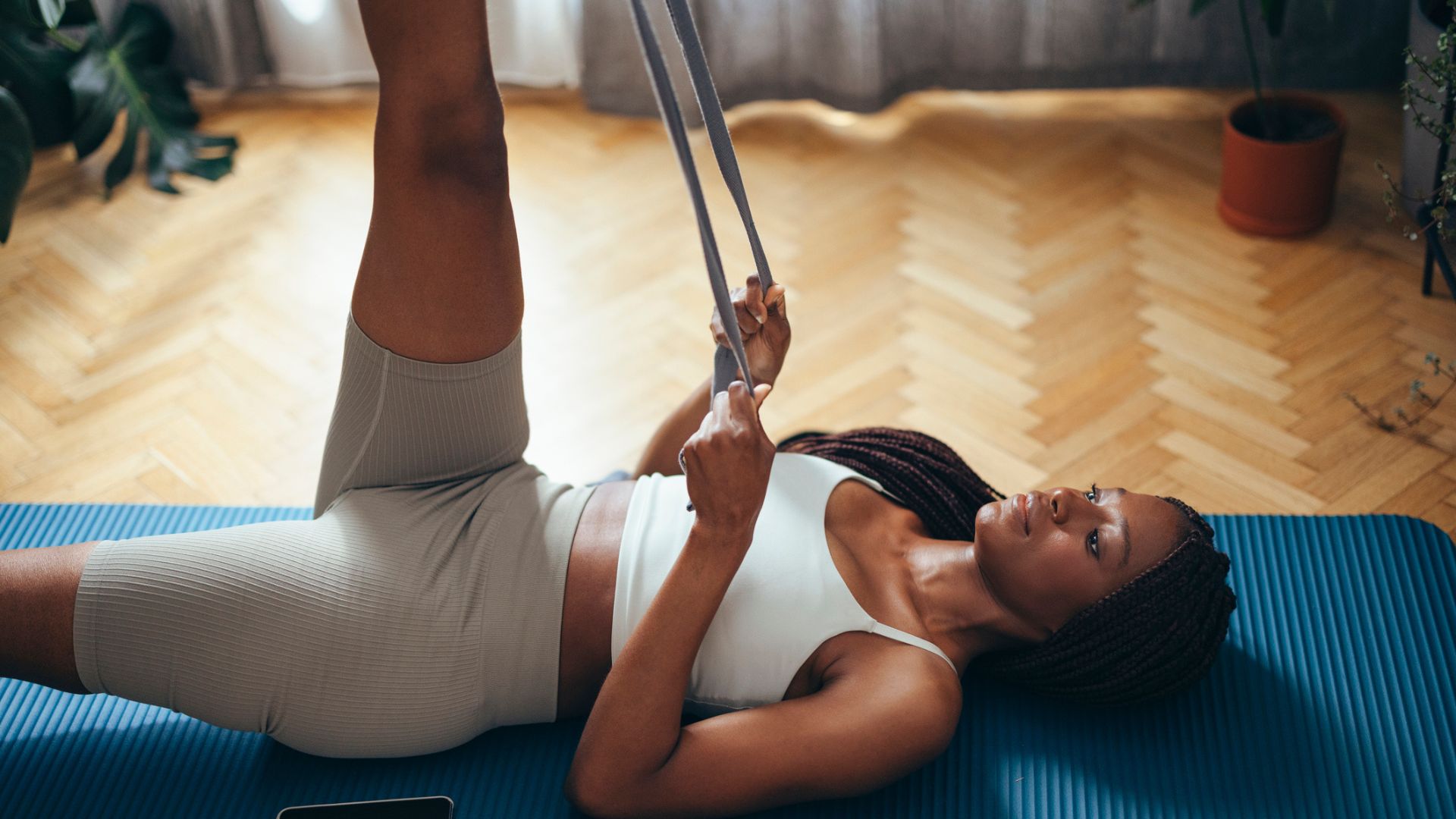You only need these three moves to build a seriously strong back
Build your back and biceps while learning how to do a pull-up with these three moves

You may have heard the term "mirror muscles" before, referring to the particularly visible areas many people focus on when they start strength training (namely, the chest, abs and arms). However, if you want to build a strong, balanced body, you need to work your back muscles too.
These three exercises from certified personal trainer Madison Watt will engage most of the muscles found across your back including the largest of the lot: the latissimus dorsi, or lats for short.
They'll also hit your biceps, as well as helping you build the strength needed to learn how to do a pull-up, so there's plenty to be gained from giving them a try.
To do these moves you'll need a pull-up bar, a low bar (or barbell set up on a squat rack) and a long resistance band, which can all be found in most gyms. However, if you have this equipment at home or know a nearby park with a pull-up bar, you can always mix things up with an outdoor session.
Watch Watt’s video below to see a demonstration of each of the movements, then try to mimic her technique as you learn them for yourself. This will help you perfect your form, get the most from your training and avoid injury.
Watch Madison Watt's three pull-up progressions
A post shared by Madison Watt, CPT (@movewmads)
A photo posted by on
The first exercise is an inverted row, which Watt says will target a range of back muscles as well as improving scapular retraction — the process of moving the shoulder blades together towards the spine, and a key part of the pull-up.
Next, it's the bodyweight assisted pull-up. This mimics a standard pull-up and works the same muscles, making it great for building the specific strength needed for this skill. However, it allows you to support your torso with your legs, making the movement slightly easier.
Get the Fit&Well Newsletter
Start your week with achievable workout ideas, health tips and wellbeing advice in your inbox.
Finally, loop a resistance band around a pull-up bar for the band-assisted pull-up. Choose a heavier resistance band to begin with, then switch to progressively lighter bands as your strength improves.
The pull-up provides one of the best back workouts around, and training for it with these three moves will provide a similar stimulus, helping you build strength and muscle across the back side of your upper body.
This can help support your spine, maintain good posture and even improve your performance in other sports like swimming and climbing.
You can use these exercises as a workout in themselves, performing each one for three sets of eight to 10 repetitions, or you can add them into longer sessions like this 20-minute dumbbell session to work your whole upper body.
You could also use them as part of a month-long challenge, like the one our writer tackled to find out what happens to your body after 30 days of pull-ups.
Alice Porter is a freelance journalist covering lifestyle topics including health, fitness and wellness. She is particularly interested in women's health, strength training and fitness trends and writes for publications including Stylist Magazine, Refinery29, The Independent and Glamour Magazine. Like many other people, Alice's personal interest in combining HIIT training with strength work quickly turned into a CrossFit obsession and she trains at a box in south London. When she's not throwing weights around or attempting handstand push-ups, you can probably find her on long walks in nature, buried in a book or hopping on a flight to just about anywhere it will take her.
-
 Build blockbuster arms and abs with Chris Hemsworth's go-to dumbbell circuit
Build blockbuster arms and abs with Chris Hemsworth's go-to dumbbell circuitAll you need are adjustable dumbbells and 20 minutes
By Sam Rider Published
-
 Forget crunches—if I wanted to improve core strength I'd do this neck-friendly Pilates workout
Forget crunches—if I wanted to improve core strength I'd do this neck-friendly Pilates workoutAnd it takes just five minutes
By Maddy Biddulph Published